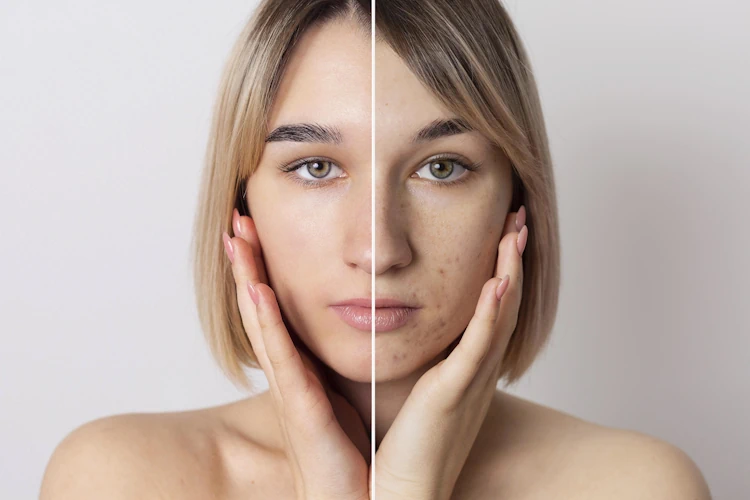Month: February 2022
Understanding Different Types of Pigmentation Laser Treatments
Pigmentation refers to the color of the skin, which can be influenced by various factors such as melanin production, sun exposure, and skin disorders. Excessive or irregular pigmentation can result in conditions like melasma, post-inflammatory hyperpigmentation, and age spots. Laser treatments or hilangkan jeragat di muka are increasingly being used to address pigmentation disorders due to their precision and effectiveness.
Pigmentation Disorders and Their Causes
- Melasma: A common condition characterized by dark patches on the skin, often occurring due to hormonal changes, sun exposure, or genetics.
- Post-Inflammatory Hyperpigmentation: Darkening of the skin following an injury, inflammation, or trauma to the skin, such as acne or eczema.
- Sun Damage: Excessive sun exposure can lead to an increase in melanin production, resulting in sun spots or solar lentigines.
- Age Spots: Also known as liver spots or solar lentigines, age spots are flat, brown, or black spots that commonly appear on areas of the skin exposed to the sun.
- Birthmarks: Congenital pigmentation variations that can range from small, flat spots to larger, raised patches of skin.
Understanding Different Types of Laser Treatments
- IPL (Intense Pulsed Light): A non-ablative treatment that uses a broad spectrum of light to target pigmented lesions. It is commonly used for conditions like sun damage, age spots, and freckles.
- Fractional Laser: A non-ablative or ablative treatment that uses a laser beam to target specific areas of pigmentation. It is effective for conditions like melasma and post-inflammatory hyperpigmentation.
- Q-switched Laser: A non-ablative treatment that uses short pulses of laser energy to break down pigmented lesions. It is commonly used for conditions like melasma, post-inflammatory hyperpigmentation, and tattoo removal.
Visit mediskin for this laser treatments.

Benefits and Risks of Laser Treatments for Pigmentation
- Benefits: Laser treatments can effectively target pigmentation disorders with minimal downtime and discomfort. They offer a precise and controlled approach to treating pigmented lesions.
- Risks and Side Effects: Risks and side effects of laser treatments for pigmentation may include temporary redness, swelling, or darkening of the treated area. In rare cases, scarring or infection may occur.
Preparation and Aftercare for Laser Treatments
- Preparation: Before undergoing laser treatment, patients should avoid sun exposure, discontinue the use of certain skincare products, and follow any specific instructions provided by their dermatologist or healthcare provider.
- Aftercare: After laser treatment, patients should avoid sun exposure, use sunscreen regularly, and follow any specific post-treatment instructions provided by their dermatologist or healthcare provider.
FAQs
- How many sessions of laser treatment are typically needed to treat pigmentation disorders?The number of sessions required for laser treatment can vary depending on the type and severity of the pigmentation disorder, as well as the individual’s skin type and response to treatment. Some individuals may see improvement after one session, while others may require multiple sessions.
- Can laser treatment completely remove pigmentation disorders?While laser treatment can significantly improve the appearance of pigmentation disorders, it may not completely remove them. Some individuals may require ongoing maintenance treatments to maintain results.
- Are laser treatments safe for all skin types?Laser treatments can be safe for all skin types, but individuals with darker skin tones may be at a higher risk of side effects such as hyperpigmentation or hypopigmentation. It’s essential to consult with a dermatologist or healthcare provider to determine the best treatment options for your skin type.
- How long does it take to recover from laser treatment for pigmentation disorders?Recovery time from laser treatment can vary depending on the type and severity of the pigmentation disorder, as well as the specific laser treatment used. Some individuals may experience temporary redness or swelling, which typically subsides within a few days to a week.
- Are there any alternative treatments for pigmentation disorders?In addition to laser treatment, there are other treatment options available for pigmentation disorders, such as chemical peels, microdermabrasion, or topical medications. It’s essential to consult with a dermatologist or healthcare provider to determine the best treatment plan for your skin.
Ventilation and Comfort: Features to Look for in an MTB Helmet
Mountain biking, with its rugged terrains and adrenaline-pumping trails, demands not only skill but also the right gear to ensure a safe and enjoyable experience. Among the essential pieces of equipment, the mountain bike helmet takes center stage. In this article, we will explore the crucial factors of ventilation and comfort that every mountain biker should consider when choosing an mtb helmet.
Mountain bike helmets are specifically designed to provide protection in off-road conditions. As riders navigate challenging landscapes, the need for enhanced ventilation becomes paramount. A well-ventilated helmet not only keeps the rider cool but also contributes to overall comfort during extended rides.
Strategic Ventilation Design
Look for helmets with a strategic ventilation design that channels airflow efficiently. Vents strategically placed around the helmet promote air circulation, preventing heat buildup and ensuring a refreshing breeze as you tackle demanding trails.

Multiple Ventilation Zones
Opt for helmets with multiple ventilation zones. These zones target different areas of the head, allowing for customized cooling. Forehead vents, top vents, and rear exhaust ports work together to create a well-ventilated environment, even in the most intense riding conditions.
Adjustable Ventilation
Some MTB helmets feature adjustable vents, giving riders the flexibility to control airflow based on the weather and their preferences. This feature is particularly beneficial during varying trail conditions, allowing bikers to adapt to both uphill climbs and downhill descents.
Moisture-Wicking Liner
Ventilation alone is not enough; comfort also relies on managing sweat. Look for helmets with moisture-wicking liners that efficiently absorb and evaporate sweat, keeping your head dry and comfortable throughout the ride.
Padding and Cushioning
A comfortable fit is essential for an enjoyable ride. Helmets with adequate padding and cushioning not only enhance comfort but also contribute to a secure and snug fit. Look for removable and washable padding for easy maintenance.
Dial Fit System
The dial fit system is a game-changer when it comes to comfort. This adjustable system allows riders to fine-tune the helmet’s fit, ensuring a secure and personalized feel. It also accommodates different head shapes, providing a comfortable experience for a diverse range of riders.
Lightweight Construction
Weight matters, especially during long rides. Opt for MTB helmets with lightweight construction that doesn’t compromise on safety. A well-balanced helmet reduces strain on the neck and shoulders, contributing to overall comfort on the trails.
Aerodynamic Design for Efficiency
While ventilation is crucial, an aerodynamic design can enhance overall riding efficiency. Look for helmets with a balance between ventilation and aerodynamics, ensuring that you cut through the air smoothly without compromising on airflow.
Impact Absorption Technology
Comfort also extends to safety. Helmets equipped with advanced impact absorption technologies provide an added layer of security. Features like MIPS (Multi-directional Impact Protection System) enhance protection during unexpected falls or collisions.
Conclusion
In the world of mountain biking, where the thrill of the ride is matched only by the need for safety, choosing the right helmet is a decision not to be taken lightly. Ventilation and comfort are paramount, ensuring that your focus remains on conquering the trail ahead. Whether you’re a seasoned rider or a beginner exploring the mountain biking world, prioritize these features in your MTB helmet selection for a ride that’s not only safe but also incredibly comfortable.
FAQs
- Q: Can I use a road bike helmet for mountain biking?
- A: It’s recommended to use a helmet specifically designed for mountain biking to ensure optimal protection, including enhanced ventilation features.
- Q: How do I clean the padding in my MTB helmet?
- A: Most helmets with removable padding allow for easy cleaning. Follow the manufacturer’s guidelines, usually involving gentle handwashing or using a mild detergent.
- Q: Are all MTB helmets adjustable for different head sizes?
- A: Many MTB helmets come with adjustable features like a dial fit system, making them suitable for various head sizes and shapes.
- Q: What is MIPS technology, and is it necessary?
- A: MIPS (Multi-directional Impact Protection System) is a technology that reduces rotational forces during impacts. While not mandatory, it provides an additional layer of protection.
- Q: How often should I replace my MTB helmet?
- A: Replace your MTB helmet every three to five years or sooner if it has been involved in a crash or shows signs of damage.